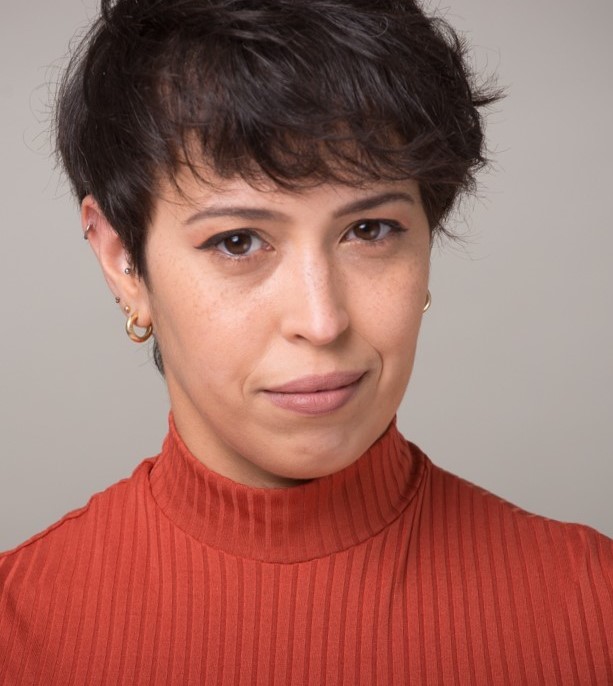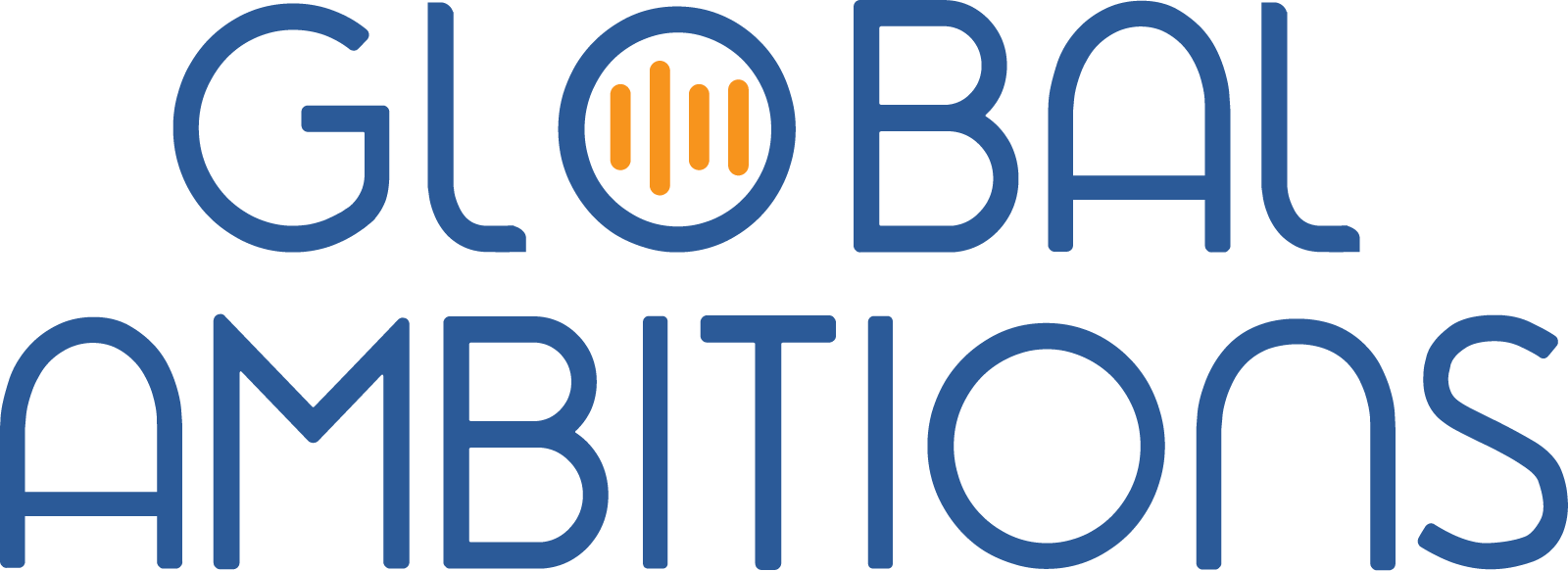With Mariana Rolin, Director of Quality and Creative Solutions at Chillistore
Below is a full transcript of this episode
Stephanie Harris
Hi, my name is Stephanie Harris, and I’ll be your host today for this episode of Global Ambitions. Our guest today is Mari Rolin and she is the Director of Quality and Creative Services at Chilistore. And today, we’re going to be talking about inclusion and how to incorporate it as an integral part of your business. So, Mari, welcome to the program.
Mariana Rolin
Hi, Stephanie. Thank you very much for having me. I’m very excited.
Stephanie Harris
So can you tell us a little bit about yourself and maybe your background and how you got interested in this topic?
Mariana Rolin
Yeah, sure. My background is a little bit of a change. There were some changes in my history. I started in marketing social communications originally, and I spent a good part of my career working in content management. And as a content manager, you get to study the audience really well and you get to examine what is expected in terms of content, who we are talking to, and what we are not mentioning, as well as touching on the points of language.
So actually, during my content management career, that’s when I got into content localization, especially subtitling. And I fell in love with the market, with the idea of work with languages. And I moved from Brazil to Ireland, where I still live to pursue a masters. And since then I have been working in localization. And when I started working in Chillistore I focused a lot on quality, and then all of those topics kind of got bound together.
When you work with audiences and with languages, you become painfully aware of the limitations and the opportunities that are in those content. So, what we can say and what we cannot say, and of course all the biases that are embedded in language that we don’t think about on the day-to-day. And that’s when I became really interested in the topic of inclusivity and belonging from a content point of view and from a language point of view. So I would say it’s impossible to go through a career that has dealt with writing and translating and not touch on inclusivity. And being interested in the topic, to me, it was straightforward, something that I really wanted to look further into.
Stephanie Harris
All right. So to jump right into the topic then what are some of the unique characteristics of language that bring these challenges for inclusive content?
Mariana Rolin
Well, language is deeply human. It’s an expression of ourselves, and it carries a lot of our communities, beliefs and biases which is now sometimes even included in grammatical aspects. And those are very hard to navigate because a grammatical agreement it’s something that binds all the speakers together and how you’re going to compose content in a given language. That being so, some of the topics such as declination and marking are important for a good composition, are seen as important in a good composition, and changing that is tricky and challenging and takes time.
And I guess when we talk about that, what comes to the forefront of everybody’s mind, especially for a speaker from a language such as mine, is gender neutrality. So if you work in a language that it’s deeply gendered, you know, everything has a marking that indicates if we’re talking about a particular gender, it’s hard to navigate that in a more neutral way.
Like in English, we found ways around this that were much more embedded in the history of the language and were much more available for users to rely on when we started worrying about that. So if you try to bypass gender neutrality, for example, to the topic that we used as reference, it takes a lot of rethinking of how we use language daily and what a good composition is supposed to be.
So what I would say to all that, you know, I don’t think gender inclusivity is the biggest challenge. Inclusive language is actually one piece in a very complex puzzle. I’d say the biggest challenge for inclusive language is to think in consideration that you have to consider other experiences. So you can, for example, take into consideration the neutrality and put forward solutions or suggestions that will hinder understanding for screen readers or may not suit Neurodivergent audiences.
So I’d say thus the challenges are, in summary, the resources through which we convey meaning. How do we ensure that the solutions proposed are not excluding other groups when you’re trying to bring everybody together?
Stephanie Harris
Okay, so what are some different methods you’ve seen in business to address these types of challenges?
Mariana Rolin
So there are a few layers of methods that we can use. Some of them are very holistic and very open. And then there are the specific strategy steps, right? One of the biggest concerns I have whenever I talk about inclusivity, when I research about inclusivity, when I try to read more and get educated about the topic is how it’s not a box-ticking experience. So you can’t just look at a list of items that you’re going to check and make sure that it’s in place so you can work on inclusion without dialog.
Our experiences are unique, and the shortcomings of our perceptions are many. So we have to be accepting of that. And then understand that this justice answer is very broad, and the best methods I’ve seen teams applying are those that use technology to guide and to help focus the dialog around inclusivity. So finding the targeted solutions to make sure that the content that you’re looking at is relevant to your audiences and is relevant to your brand.
To the gender neutrality point above, for example, in Portuguese, we have many options that have been put forward, such as replacing the gender mark with a vowel or working with focus shifting and gender coordination. So as in listing all the genders in a particular sentence. But that’s a decision that can only be made when you are well-informed about the content and the audiences that are reading your content. So they’re reading the text that you’re putting forward for your brand.
So in summary, to make it broad, it’s definitely dialog. The best method is that you’re willing to open the conversation to members of your team so that they can bring forward the concerns and solutions as well. There is an expectation that there’s not going to be a final solution tomorrow, which I think should be a reassurance to all.
Stephanie Harris
Right. So you mentioned dialog as being kind of the key to this whole process. What are some ways that people can approach having dialog worked into their workflows?
Mariana Rolin
I guess you could say so it’s not an afterthought, so it’s incorporated into their processes. If you want to start a dialog around inclusion, it’s very important that you understand your content and the source. I think for localization, a lot of the source we work with comes from English, right? So if you work with multilingual teams to assist you in your localization process, being aware of what your audience is and who are you hoping to communicate with, and then passing on those expectations to your linguistic teams, including the expectations around inclusivity and whatever challenges we can foresee are definitely good steps towards opening a dialog with the team.
So people come back to you, certainly with their considerations, their experiences, and we’re talking then about professional experience, of course. So how we deal with inclusion on a linguistic point of view as well as personal experiences? What has happened in the past? What kind of directions have they taken that would help guide this conversation?
So I understand I talk a lot about conversation and dialog and participation, and those are big words, and they’re very broad, but there are ways of targeting them. And that’s the proposal that I’d like to bring to the teams that work together with me on inclusion topics. Which is like, okay, are we aware of all of the challenges? I don’t think there’s an expectation that we’ll be always aware of all the challenges. And that’s why dialog is important, because we cannot see everything all the time.
Stephanie Harris
Yeah, yeah. No, that is very important. Have you had any clients or companies that you’ve worked with where you’ve seen they’ve done this really well, and can you kind of tell us a few examples of, of good examples and maybe even some bad examples if you have those too?
Mariana Rolin
Yeah, for sure. So one of our main clients is very good at that. And you know, when you’re a company that is willing to work with inclusivity and inclusive content, if you’re really serious about that, you’re going to have the opportunities of finding great solutions. And also for great failures, all in the same workflows, because I think you can learn a lot from the inclusion processes. What they really did well was what I think I mentioned earlier on about AI-assisted research.
So if you know your content really well, you know what you’re hoping to do, then you’ll be able to craft rules around your branding that would help guide the linguistic teams. But then, okay, if you’re working with content that is very broad, if you’re making a lot of changes or making a lot of points, then you might want to target that discussion using practical day-to-day tools.
So, for example, the technology that would help us predict possible issues with the content in certain languages because of inclusivity. And then it flags them to us. That helps a lot. Planning around and finding the solutions that are suitable for the client. So this client was very good with that. They were very good at using technology and leveraging technology to bring the points that they want to bring to all the teams. And, of course, they were also very good at looking around the table because that’s another part of inclusion that we don’t necessarily talk about very often.
Because not only is it a localization point, it’s a belonging point. So they’re very good at looking at certain topics and looking around the table and seeing who are we missing that should be participating in this dialog and that should be helping find solutions for the content. And they used to bring specialists to help the linguistic team.
So there was a recognition that we are limited in our resources, and we need help, and that’s where the dialog ties back again. You most likely won’t have all the solutions in your hands, and it’s important to open it for other people to bring the solutions and also the problems, the questions that we might not have seen.
Stephanie Harris
So you mentioned they were really good at pulling in resources. So if I know that my table does not have all the people I need at it, what would be kind of the first step into finding those resources and pulling those people in? What do you recommend is a good process to figure all of that out?
Mariana Rolin
Oh, that’s bold. I wouldn’t be so bold to say I have a solution for all the processes. But if you know your source, if you know your content well, then you probably know where we are lacking. When I look around the content that I work on, and I see the teams that we have, I know where experiences might be missing, and those are good places to start.
So if you open yourself to work with inclusion in language, you are inevitably opening yourself to work with inclusion in your teams and your companies. So you have to look critically at that and say. Yeah, this isn’t just a language issue. This is a whole company issue.
Stephanie Harris
Yes. So that’s good advice, Mari. Thank you for that.
Mariana Rolin
No problem.
Stephanie Harris
Well, that’s about all the time we have for today. But thank you so much for coming in and sharing your insights on this topic.
Mariana Rolin
Oh, thank you so much for having me. That was quick. I think time flies when you’re having fun.

Mariana Rolin
Director of Quality and Creative Solutions at Chillistore




